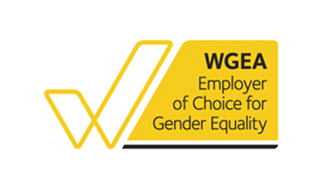- in Oceania
- within Tax topic(s)
- in Oceania
- with readers working within the Telecomms and Law Firm industries
- within Technology, Media, Telecoms, IT, Entertainment, Government and Public Sector topic(s)
- with Senior Company Executives, HR and Inhouse Counsel
The Productivity Commission's interim report, Creating a More Dynamic and Resilient Economy (Interim Report), identifies a notable decline in Australia's business investment and productivity growth over the past decade.
To counter this, the Interim Report recommends significant reforms to Australia's corporate tax framework and regulatory environment. The Interim Report's key proposals include:
- reducing the corporate tax rate from 30% to 20% for companies
with revenues below A$1 billion (based on domestic sales plus
exports); and
- introducing a universal 5% net cashflow tax to maintain medium-term revenue neutrality.
The proposals would have significant impacts on the tax settings for all Australian businesses, with some winners and some losers. For example, while most companies would benefit from the net overall reduction in tax burden, the proposals would generally be negative for large companies with more than $1 billion of Australian revenue as those entities would be ineligible for the reduced 20% corporate income tax rate and would also be confronted with an additional 5% net cashflow tax. Further, there remains significant uncertainty for the financial services sector. Whilst financial services might not be significantly affected by the additional 5% net cashflow tax as currently proposed due to the exclusion of interest from its design, the Productivity Commission is canvassing other ways to impose additional taxes on the financial services sector to overcome this outcome.
The proposals may also have unintended effects on the investment decisions of large companies having more than A$1 billion in revenue, as they may become more motivated to expand and invest offshore rather than in Australia (contrary to the goals of the Productivity Commission's recommendations) as their tax settings in Australia would become even more uncompetitive compared to the OECD average corporate tax rate of approximately 21%.
Who are the winners and losers?
The opportunity for meaningful tax reform is here and is clearer than ever. Australia is well positioned to strengthen its standing as a reliable and competitive hub for global investment, and in a world marked by uncertainty, its institutional strength, regulatory consistency, and history of innovation remain compelling drawcards. However, all change brings winners and losers.
Winners: Approximately 1.2 million small to medium-sized businesses, including foreign businesses who have a presence in Australia, benefiting from a lower 20% corporate tax rate.
For large institutional foreign investors that have faced significant increases to the effective tax rate in Australia through changes to thin capitalisation, capital gains tax (as it relates to the potential application of the rules) and stamp duty rules, the change will come as a welcome relief and a 'levelling of the playing field' as compared to the settings applicable to Australian superannuation funds.
Losers: Around 500 of Australia's largest companies, typically including mining and energy organisations, large retailers and supermarkets, facing an increased tax burden due to the additional 5% net cashflow tax.
Although financial services might not be significantly affected by the additional 5% net cashflow tax as currently proposed due to the exclusion of interest from its design, the Productivity Commission is canvassing other ways to impose additional taxes on the financial services sector to overcome this outcome.
It is not clear whether the Productivity Commission has turned its mind to the infrastructure or property industries which often make use of non-corporate structures such as trusts.
The impact of the net cashflow tax would be offset to some degree for capital intensive businesses by the full deductibility of capital expenditure, however the introduction of a tax system having 'two tiers' (as the Interim Report describes it) may have unintended productivity and investment outcomes for some of Australia's largest corporations. For example, offshore expansion may become even more attractive than domestic expansion for large Australian corporates, especially as the 30% corporate tax rate plus a further 5% net cash flow tax would only exacerbate Australia's already uncompetitive tax settings for those business.
While the Productivity Commission notes in the Interim Report that just over 500 companies (based on recent ATO statistics) have revenue above the A$1 billion threshold, the interim report seems to overlook the fact that those companies are major employers and investors in the Australian economy. Leaving those companies with an even more uncompetitive tax setting may have a negative overall impact on domestic investment and employment outcomes.
Australia's productivity challenge: the implications of declining business investment
The Productivity Commission notes in the Interim Report that Australia is experiencing a significant productivity downturn, driven by falling business investment. This challenge arises from a corporate tax system and regulatory environment that have become barriers to innovation, capital expenditure, and competitive market entry. The Productivity Commission's Interim Report proposes comprehensive reforms to address these challenges.
In the Interim Report, the Productivity Commission highlights a clear connection between reduced business investment and lower productivity growth. Non-mining capital expenditure has notably fallen since the global financial crisis, adversely affecting Australia's economic dynamism and wage growth.
The Interim Report also notes that Australia's relatively high corporate tax rate of 30% (compared against the OECD average of around 21%) makes Australia a less attractive destination for foreign investment. The Interim Report suggests that a reduced corporate tax rate of 20% would free up more retained earnings for capital investment and open up more capital expenditure opportunities by lowering the before-tax return on capital expenditure that companies use to meet their capital expenditure hurdle rates. The Interim Report also suggests that the reduced corporate tax rate would make Australia a more attractive destination for foreign capital.
Proposed corporate tax reforms
Reducing the corporate income tax rate
The Interim Report recommends a substantial reduction in Australia's corporate tax rate from 30% to 20% for businesses with annual revenues below $1 billion. The Interim Report notes that this reduction would affect over 99% of Australian companies. The $1 billion threshold is specifically based on domestic sales plus exports, chosen to balance the aims of encouraging investment with maintaining revenue neutrality. Global revenues would be excluded from the $1 billion threshold, although detailed implementation rules are critical, especially how domestic sales will ultimately be defined. Based on ATO statistics, the Interim Report states that just over 500 companies earn more than $1 billion in revenue.
Introducing a net cashflow tax
Alongside the reduction in corporate income tax, a 5% net cashflow tax is proposed in the Interim Report for all companies to offset the decrease in corporate tax revenue in the medium-term. Under this system, companies would immediately deduct the full value of capital expenditure in the year it is incurred rather than incrementally through depreciation. Interest is not deductible, and losses can be increased and used to offset future tax liabilities, either net cashflow tax liabilities or company income tax liabilities.
The key features of the net cashflow tax include the following:
- all sales of goods and services count as turnover, including exports and asset sales;
- immediate expensing of capital expenditure, removing long-tailed depreciation deductions;
- exclusion of financial transactions from both sales and expenses; interest earnings/payments not included – meaning that most financial services sector income would be excluded;
- losses offset against company income tax (but not to below nil) and uplifted to retain their value over time; and
- transitional rules and franking credit considerations remain under evaluation.
The following examples from the Interim Report show how the proposed reforms could work.
Table 1: Stylised summary of the proposed reforms
| Turnover < $50 million | $50 million - $1 billion turnover | Turnover > $1 billion* | |
|---|---|---|---|
| CURRENT SYSTEM | |||
| CIT rate | 25% | 30% | 30% |
| NCT rate | 0% | 0% | 0% |
| PROPOSED SYSTEM | |||
| CIT rate | 20% | 20% | 30% |
| NCT rate | 5% | 5% | 5% |
| EXAMPLE CHANGE IN TAX PAYABLE** | |||
| Impact to tax payable – profits at required rate of return | Reduced tax payable | Reduced tax payable | Increased tax payable on existing investment*** |
| No change on new investment | |||
| Impact to tax payable – profits above required rate of return | (Lower) reduced tax payable | (Lower) reduced tax payable | Increased tax payable |
Table 2: Example application of the 5% net cashflow tax
| PROFIT AND LOSS | COMPANY TAX | |||
|---|---|---|---|---|
| $m | In | Out | CIT taxable income | NCT taxable income |
| Sales revenue | $1,000 | $1,000 | $1,000 | |
| Labour costs | -$100 | -$100 | -$100 | |
| Other input costs | -$300 | -$300 | -$300 | |
| Depreciation | -$50 | -$50 | ||
| Interest | -$50 | -$50 | ||
| Capital expenditure | -$200 | -$200 | ||
| TAXABLE INCOME | $500 | $400 | ||
| Current tax liability (30% CIT only) | $150 | $150 | $0 | |
| New tax liability (20% CIT and 5% NCT) | $120 | $100 | $20 | |
Source:Productivity Commission 2025, Creating a more dynamic and resilient economy, Interim report, Canberra, July
Economic benefits of the proposed reforms
Economic modelling commissioned for the Interim Report indicates the reforms would yield substantial benefits, including increasing private sector investment by A$7.4 billion (1.6%), growing GDP by A$14.6 billion (0.5%), and boosting labour productivity by 0.4%.
These projected outcomes underline the strategic importance of tax competitiveness in stimulating both domestic entrepreneurship and foreign investment.
Regulatory reform: enhancing business dynamism
The Productivity Commission underscores the urgent need to streamline Australia's complex regulatory environment, which currently inhibits economic dynamism and innovation.
Upcoming reports and consultation phases
The Productivity Commission is undertaking five productivity inquiries, with interim reports being released sequentially:
- 31 July 2025 - Creating a More Dynamic and Resilient Economy (current report)
- 3 August 2025 – Investing in Cheaper, Cleaner Energy and the Net Zero Transformation
- 5 August 2025 – Harnessing Data and Digital Technology
- 11 August 2025 – Building a Skilled and Adaptable Workforce
- 13 August 2025 – Delivering Quality Care More Efficiently
Final reports will be submitted to the Government in December 2025, with public release subject to parliamentary scheduling.
In the meantime, the Interim Report leaves a number of uncertainties. For example, the Interim Report addresses only corporate tax settings – it is not clear whether the Productivity Commission has turned its mind to areas such as infrastructure or property which often make use of non-corporate structures such as trusts. Interactions with the imputation system will be subject to further consultation, and it is unclear whether the net cashflow tax would be covered by Australia's tax treaties. How the net cashflow tax would interact with the OECD's Pillar Two global minimum tax rules would also need clarification.
It is noteworthy that a form of cashflow tax was proposed in the Review of Business Taxation in 1999. That proposal was ultimately dismissed by the Government, so it is interesting that some 26 years after the Review of Business Taxation a form of cash flow tax may re-enter the public debate.
Looking ahead: towards a more dynamic and resilient economy?
The Productivity Commission's recommendations aim to transform Australia's corporate tax system and regulatory environment, fostering investment, innovation, and competition. Whilst the reforms are designed to reinvigorate productivity and ensure sustained economic resilience, it remains to be seen whether the proposed new tax settings would achieve their aim of increasing capital investment in Australia and thereby achieve the productivity gains that the Productivity Commission seeks.
A question remains as to whether the proposals would result in companies with revenues exceeding the $1 billion threshold being more motivated to invest offshore rather than in Australia as a result of the uncompetitive tax imposts that they would be confronted with. Such an outcome would be contrary to the goals of the Productivity Commission's recommendations.
Whilst the Productivity Commission notes that just over 500 companies (based on recent ATO statistics) have revenue above the $1 billion threshold, the interim report seems to overlook the fact that those companies are major employers and investors in the Australian economy. Leaving those companies with an even more uncompetitive tax setting may have a negative overall impact on domestic investment and employment outcomes.
Public consultation on the Interim Report is open until 15 September 2025 and a final report is due in December 2025.
The content of this article is intended to provide a general guide to the subject matter. Specialist advice should be sought about your specific circumstances.
 |
 |
| Lawyers Weekly Law firm of the year
2021 |
Employer of Choice for Gender Equality
(WGEA) |




